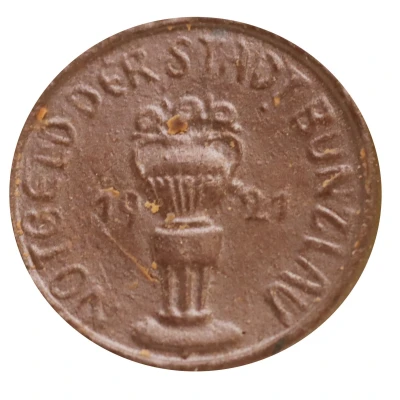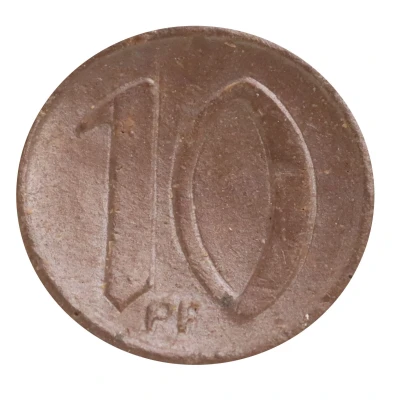


© ctucker (CC BY)
10 Pfennigs - Bunzlau
1921 year| Porcelain (brown) | 1.5 g | 21 mm |
| Issuer | City of Bunzlau (Silesia) (Prussian province of Silesia) |
|---|---|
| Period | Weimar Republic (1918-1933) |
| Type | Standard circulation coin |
| Year | 1921 |
| Value | 10 Pfennigs (10 Pfennige) (0.10) |
| Currency | Mark (1914-1924) |
| Composition | Porcelain (brown) |
| Weight | 1.5 g |
| Diameter | 21 mm |
| Thickness | 2.5 mm |
| Shape | Round (irregular) |
| Orientation | Medal alignment ↑↑ |
| Demonetized | Yes |
| Updated | 2024-10-04 |
| Numista | N#350832 |
|---|---|
| Rarity index | 95% |
Reverse
Denomination in center
Script: Latin
Lettering: 10 pf
Edge
Plain
Interesting fact
One interesting fact about the 10 Pfennigs - Bunzlau 1921 coin is that it was made of porcelain, which is a unique material for coins. Porcelain is a type of ceramic material that is known for its durability and resistance to wear and tear, making it an unusual choice for coins that were intended to be used in circulation. The use of porcelain for this coin may have been a deliberate choice to create a distinctive and memorable design, or it may have been a practical decision due to the limited availability of other materials at the time. Regardless of the reason, the porcelain composition of this coin sets it apart from other coins of its time and makes it a fascinating collector's item.